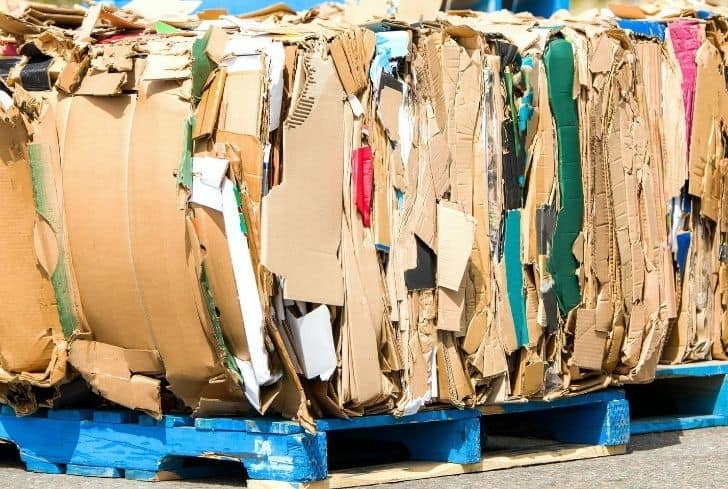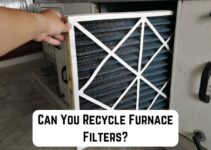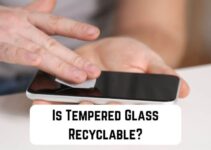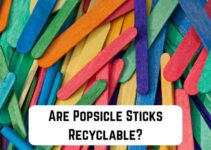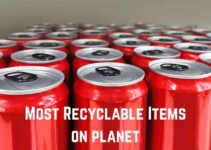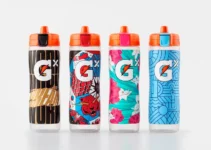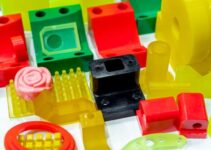Cardboard, also referred to as corrugated cardboard, is a recyclable material that is recycled by small and large scale businesses to save money on waste disposal costs. Cardboard recycling is the reprocessing and reuse of thick sheets or stiff multilayered papers that have been used, discarded or regarded as waste.
Cardboard boxes are usually heavy-duty or thick-sheets of paper known for their durability and hardness. Examples of cardboard include packaging boxes, egg cartons, shoe boxes, and cereal boxes.
Thanks to my mother, not a single cardboard box has found its way back into society. We receive gifts in boxes from stores that went out of business twenty years ago.
~ Erma Bombeck
Recycling is good for us as it not only saves our environment from deterioration by reducing pollution but also conserves valuable resources and creates jobs. Cardboard recycling is done as a way of keeping the environment clean and green. The steps below provide an explanation of the cardboard recycling system.
Step-by-Step Process of Cardboard Recycling
1. Collection
“Collection” is the first step in recycling cardboard. Recyclers and businesses collect the waste cardboard at designated cardboard collection points.
The majority of the collection points include trash bins, stores, scrap yards, and commercial outlets that generate cardboard waste. After collection, they are then measured and hauled to recycling facilities, mostly paper mills.
At this point, there are certain types of cardboard that are accepted, while some are not depending on how they were used or manufactured. For instance, cardboard that is waxed and coated or used for food packaging are not accepted in most cases as they undergo different specialized recycling process.
2. Sorting
Once the corrugated boxes arrive at the recycling facility, they are sorted according to the materials they are made of. In most cases, they are classified into corrugated cardboard and boxboard. Boxboards are the ones that are thin such as those used for cardboard drink containers or cereals boxes.
Corrugated boxes are bigger and stiffer commonly used for packaging transport goods. Sorting is important since paper mills manufacture different grades of materials based on the materials being recovered.
3. Shredding and Pulping
After sorting is done, the next step is shredding, and then pulping follows. Shredding is done to break down the cardboard paper fibers into minute pieces. Once the material is finely shredded into pieces, it is mixed with water and chemicals to breakdown the paper fibers that turn it into a slurry substance.
This process is what is termed as pulping. The pulped material is then blended with new pulp, generally from wood chips that ultimately help the resulting substance to solidify and become firmer.
4. Filtering, Conterminal Removal, and De-Inking
The pulp material is then taken through a comprehensive filtering process to get rid of all the foreign materials present as well as impurities such as strings, tape or glue.
The pulp further goes into a chamber where contaminants like plastics and metals staples are removed through a centrifuge-like process. Plastics float on top while the heavy metal staples fall to the bottom, after which they are eliminated.
The next process, de-inking, involves putting the pulp in a floatation device made up of chemicals that take away any form of dyes or ink via a series of filtering and screening. This step is also called the cleaning process as it cleans the pulp thoroughly to ensure it is ready for the final processing stage.
5. Finishing for Reuse
At this stage, the cleaned pulp is blended with new production materials after which, it is put to dry on a flat conveyor belt and heated cylindrical surfaces.
As the pulp dries, it is passed through an automated machine that press out excess water and facilitates the formation of long rolls of a solid sheet from the fibers called linerboards and mediums. The linerboards are glued together, layer by layer, to make a new piece of cardboard.
In other cases, the medium is used as the corrugated sheet, which is taken through two huge metal rolls with teeth to give it the ridges. Linerboards are then glued to the medium as the thin outer covering.
Alternatively, the linerboards and mediums are ferried to boxboard manufacturers where the manufacturing process is completed by the use of machines that shape and create a crease along pattern folds to make the boxes used for packaging or transporting products.
Advantages of Cardboard Recycling
1. Saves Landfill Space
Cardboard waste dumped in the landfill is about 40% of the total municipal waste. Cardboard recycling helps to reduce the dumping of cardboard waste in landfills. One tonne of cardboard saves more than 9 cubic yards of landfill space. On this basis, cardboard recycling helps to improve the cleanliness of the environment and promotes healthy human surroundings.
2. Environmental Conservation
The cardboard materials are 100% recyclable and biodegradable. Thus, it reduces environmental footprint and degradation by offering what is termed as “green” packaging solutions. Some cardboard is made from almost 100% recycled materials, while the majority is averaged at 70% to 90%.
Recycling cardboard also offers a fundamental solution to environmental conservation by preserving natural resources due to its highest reuse percentage in producing new cardboard products.
3. Promotes the Use of Renewable Materials
The wood chips materials added during pulping are made from birch or pine tree pulp that have a high percentage of recyclable content. Furthermore, these trees are easy to grow in various environmental conditions.
They are also first-growing compared to hardwood trees. Due to the fact that they can grow fast in various conditions and their recyclable quality, it means they can be managed and harvested sustainably, thereby promoting the use of renewable materials.
4. Saves Energy
Owing to the highest percentage of cardboard recyclability, the amount of energy required for producing corrugated packing products is tremendously reduced, and the saved energy can be used in the manufacture of other resources.
Recycling cardboard requires only 75% of the energy required to make new cardboard. Recycling of cardboard requires 90% less water and 50% less electricity needed to make them.
Further, they are made from locally available materials that can be harvested in an environmentally friendly way.
On this basis, the transportation and production costs of cardboard recycling are reduced while at the same time excelling at delivering materials of greater structural strength for packaging or protecting goods in transit. This means no extraneous materials and energy are needed to manufacture new cardboard boxes.
As a result, recycling cardboard saves energy and materials needed to make new cardboard and also reduces environmental pollution.
5. Saves Trees
Cardboard and paper come from trees. Another positive impact of recycling cardboard on the environment is the reduction in the number of trees cut down each year. Deforestation has been a significant cause of global warming.
But with the latest technology that informs cardboard recycling, the need to cut down trees to produce more materials is reducing gradually, which is good for the environment.
It is estimated that when 1 tonne of cardboard paper is recycled, about 12 to 31 trees are saved, which further preserves the natural habitat and the ecosystem in general.This, in turn, becomes beneficial to the environment and mankind as a whole. If a person recycles all the paper produced during one year, it saves almost one tree from being cut down.
6. Saves Water
The process of making paper products like cardboard from wood materials involves the use of a significant amount of water. But, as recycled cardboard had passed through the processed stage already, less water is needed for the production of new materials.
Recycling paper saves 80% of water compared to production from virgin fiber. In a nutshell, you are saving approximately 7000 gallons or more than 25000litres of water on every tonne of cardboard you recycled.
7. Creates Job Opportunities
Recycling creates a lot of job opportunities for people right from the collection of waste cardboard until the filled product reaches the market. This, in turn, adds to the economic stability and growth.
8. Reduces Greenhouse Gases
Since cardboard is biodegradable, it decomposes automatically. But sometimes it can emit harmful gases. So if these are recycled, there is a considerable reduction of greenhouse gas emission.
Incinerating 1 tonne of paper produces up to 750 kg of carbon dioxide. Carbon dioxide (CO2) is one of the greenhouse gases that cause climate change.
In paper manufacturing, each time 1 tonne of virgin fibers is replaced by recycled paper and cardboard, 2.3 tonnes of CO2 equivalent are saved. Recycling also reduces water and air pollution by 35% and 74%, respectively.
Besides, cardboard that is trashed at the landfill usually breaks down and releases a toxic greenhouse gas known as “methane.” Methane is known to contribute 20 percent more to global warming than the effect of carbon dioxide.
9. Saves Resources
Recycling one tonne of corrugated containers saves 390 kWh of energy, 1.1 barrels (176 liters) of oil, 6.6 million Btu’s of energy, and 5 cubic meters of landfill. By recycling, the paper-cardboard industry could be supplied with almost 69% of the resources it needs.
10. Durable
Recycled cardboard does not lose durability or resistance. After recycling, corrugated cardboard remains of the same quality or properties and is also more economical.
11. Source of Revenue
Cardboard recycling can actually become a source of revenue for you, rather than a waste hauling expense. It also can create a safer and more efficient work environment for your staff.
Why Recycle Cardboard?
Recycling is good for our planet as it helps to conserve resources, create jobs and reduces pollution from the production of new materials. Big businesses also recycle items as part of their corporate social responsibility programs, and it also helps them to save money on waste disposal costs.
Many of us buy so many items online; we have lots of cardboard boxes to dispose of. There are several ways to dispose of these items like:
Reuse: When you have plenty of cardboard boxes at your disposal, just use them for storage purposes. You can even make toys for your kids from large cardboard size boxes. You can also use them as containers to separate different items for recycling purposes.
Pass them: You can pass on big cardboard size boxes to your friends or relatives in case they are planning to shift home. Small cardboard boxes can be used to store items that are not used too frequently. School children can use these cardboard boxes for their school projects.
Recycle: All those pieces of cardboard boxes that you are not able to reuse for any reason, you may send them to the local recycling center. Cardboard is accepted at most of the waste recycling centers.
Here is a great infographic on cardboard recycling from Earth911.
